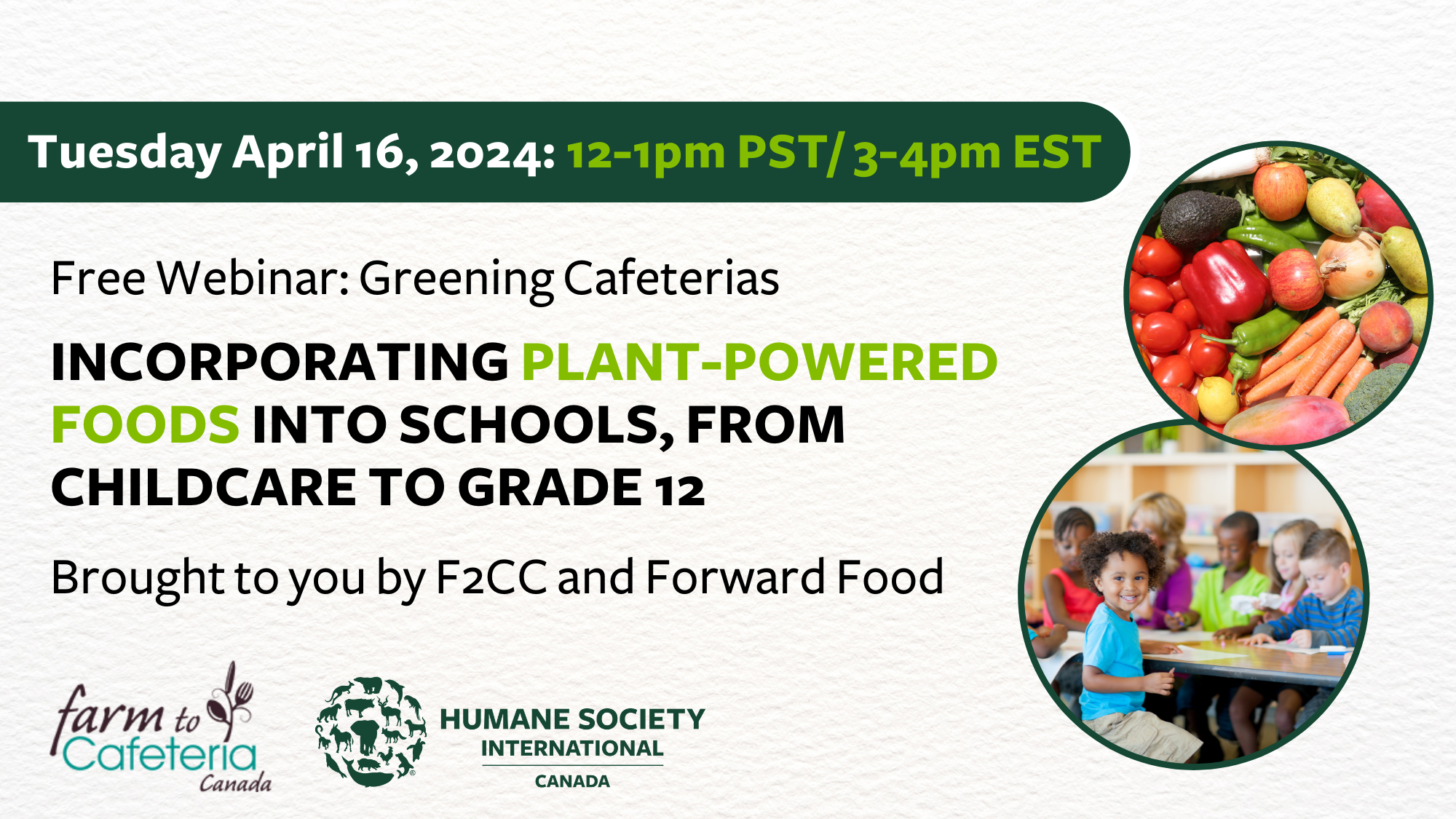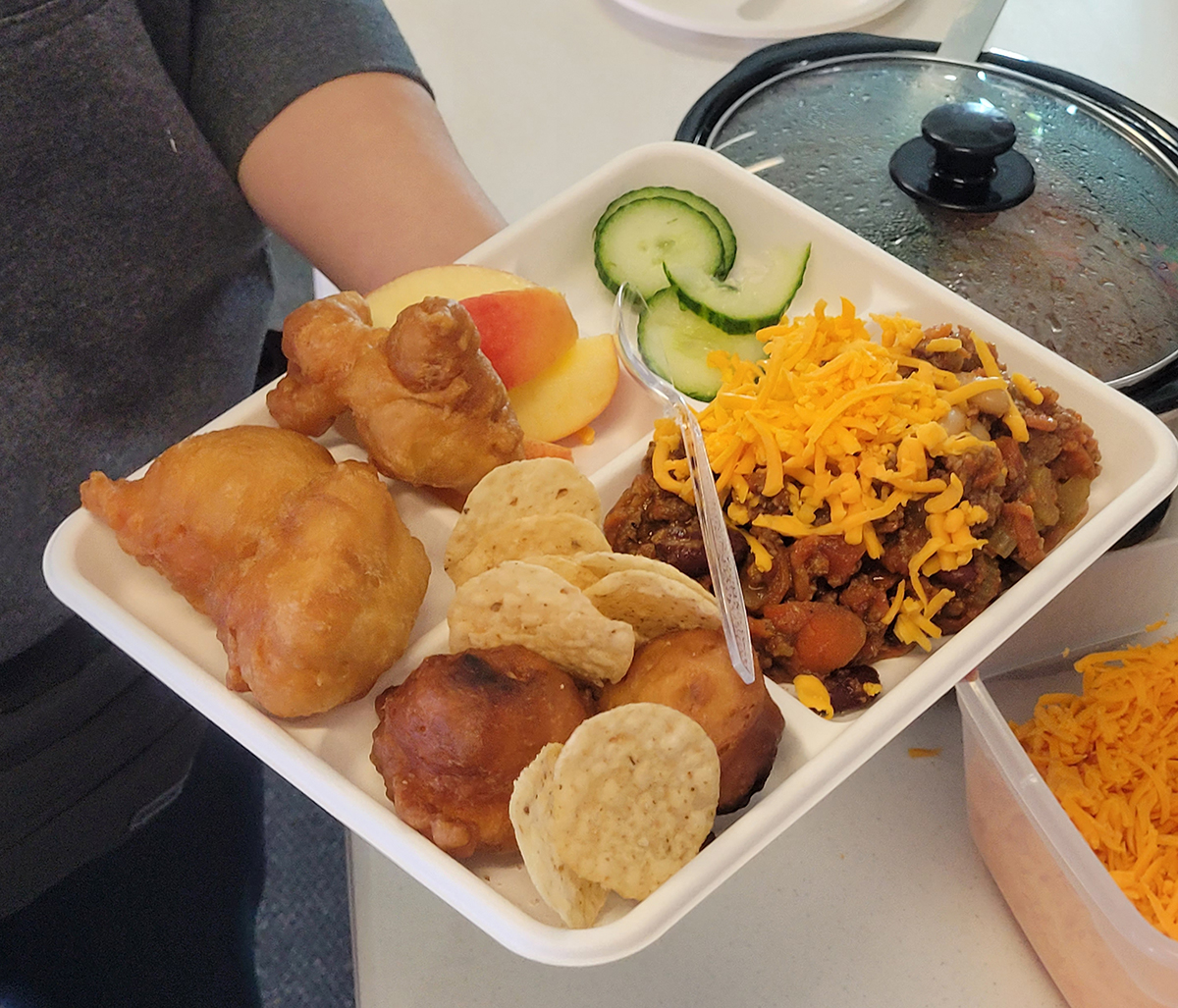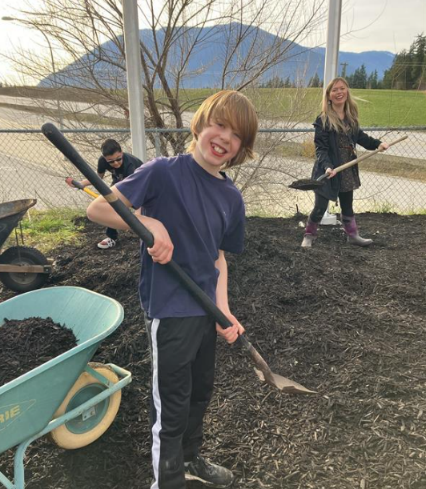Templeton High School, Vancouver, BC
2017-2018 (Year 2)
This is our third year running our garden, and in these three years our school of 850 students has seen some amazing moments of learning, both for students and staff. Running a high school garden, even in this short amount of time, has provided the opportunity for hundreds of students to have an opportunity to get their hands dirty, and to learn about an area of education previously inaccessible to them. In our diverse neighbourhood, it has also provided students whose parents and grandparents have gardened an opportunity to honour those traditions, and take them on for themselves.
This past school year has brought with it many good, and some not-so-good moments for us all.
The good:
During a grade 8 class reading of the novel by Karen Cushman “The Midwife’s Apprentice”, we learned about many of the herbal remedies used by a traditional midwife in a medieval English village. While we learned about the importance of dragon’s blood and water used by a hangman, we also learned about comfrey and sage, chamomile and rosemary. We then planted our own medicinal herbs and enjoyed the opportunity of trying out the different herbal teas. We also explored the medicines right under our feet with a look at chickweed, dandelion and plantain.
In a grade 8 Geography unit the students spent a lot of time focusing on the geography of the Lower Mainland, and what better way to do this than by talking about what food grows in our region, and then planting and harvesting it! We harvested a delicious fall salad, and then built hoop houses for our winter greens, which were enjoyed in a hearty spring smoothie.
“No chard for me, please!” “Oh, this is actually pretty good!” (grade 8 student)
The environment club enjoyed the opportunity to plant a tea garden this year. They planted mint, sage, lavender, rosemary, calendula and chamomile, amongst others. After harvesting these teas the environment club offered them to the school body during lunch hour on two different occasions throughout the winter. This was a popular offering, enjoyed by many of our students! They also had the opportunity to take some of these herbs and learn how to make salves from them.
“You can eat dandelion? I thought it was just a weed!” (tea drinker)
We were also able to add another full-sized garden bed to our mix this year. A grade 9 Science class took this on as part of a sustainability project they were working on, bringing our total to 8 garden beds. We have built all of our garden beds in house, and this has definitely been a big part of the learning for our students!
We also had our Foods classes out in the garden planting kale, radishes and spinach, a Science class out planting tomatoes and potatoes, and throughout the battles against aphids and chickweed, food was grown, harvested and eaten by close to 150 students this year.
“I love learning about the foods that my grandmother plants!” (grade 11 student)
The not-so-good:
This year saw the retirement of a Foods teacher and a complete roll over of both principal and vice-principal, as well as the subsequent closing of our Teaching Cafeteria. While we still offer hot lunches to our students, we are no longer able to participate in extra ventures in the cafeteria. This has meant that our salad bar program was forced to go on hiatus, despite many attempts at a work-around. We remain in this state of uncertainty for the time being, reminding us of the transient nature of many of our programs.
2016-2017 (Year 1)
After two years of planning, managing, and helping to build our school garden we have not been able to produce radical changes (yet?): the garden has not reversed the global warming effect, none of our students have enrolled in an environmental university program, nor have they planted gardens of their own. During this time, I have also been inspired, and certainly daunted, by other successful stories about students’ engagement in the school gardens. However, one thing I have to remind myself as a teacher: we are prophets of a future not our own. Our role –which in this case is quite literal- is to plant the seeds that one day will hopefully grow. So this story is not about any life changing moment, but about a small seed that has given me moments of hope in our small and expanding garden.
In 2017, I taught a class for children with some specific learning challenges. The group is small, but has not been particularly cohesive. For the most part, they are not thrilled about a lot of what goes on in a school. Spring arrived very slowly while we began a unit on the Middle Ages, reading a book called “The Midwife’s Apprentice.” To get the students outside, I drew connections between the midwife’s healing practice and our curriculum, and I planned a medicinal and herbal plant walk, a workshop about oil and tincture making, and building and planting a garden bed. The behavioral challenges persisted; I spent a fair amount of time keeping the students focused on what was at hand. However, one day I sat back and watched the kids in the garden as the afternoon wound down. What I saw was a seed of hope. A group of kids who have to varying degrees learning and behavioral challenges, and mostly challenges with relating to others in an appropriate way, were sharing time and space together in a collaborative way. We were weeding a garlic bed and hauling gravel for our raspberry bed, and everyone was involved. Then the entire group sat and chatted to each other in the garden. For some, this may not sound like a big thing, but watching these students relate as a cohesive group, joking, relaxing, and working together made me feel like there was goodness happening. After a hard year, my seed of hope was sprouting. The students also bravely ate radishes just harvested, picked kale leaves, and tried arugula. But for me the moment was about the ability to connect with each other in a respectful way.
Other seeds of hope have sprouted: Kids trying to be first in line at the salad bar to get first dibs on the best veggie: avocado! Or taking ownership of the painting and building projects, and carrying a worm –one worm! into the garden as they know it is good for the soil. Bees visiting our garden also remind me how we are contributing to their survival. During the hard days, when I feel like the only thing I do is try to get the students focused for one minute out in the garden, these moments remind me that we are both literally and metaphorically planting the seeds and watering the first sprouts knowing that they hold future promise. (Oscar Romero)




